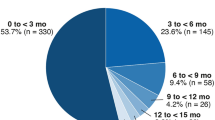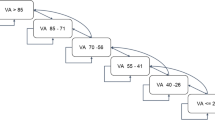Abstract
PF-00337210 is a potent, selective small molecule inhibitor of VEGFRs and has been under consideration for the treatment of age-related macular degeneration. An ophthalmic solution formulation intended for intravitreal injection was developed. This formulation was designed to maximize drug properties such that the formulation would precipitate upon injection into the vitreous for sustained delivery. As a parenteral formulation with additional constraints dictated by this specialized delivery route, multiple features were balanced in order to develop a successful formulation. Some of these considerations included low dosing volumes (≤0.1 mL), a limited repertoire of safe excipients for intravitreal injection, and the unique physical chemical properties of the drug. The aqueous solubility as a function of pH was characterized, buffer stressing studies to select the minimal amount of buffer were conducted, and both chemical and physical stability studies were executed. The selected formulation consisted of an isotonic solution comprised of PF-00337210 free base in a citrate-buffered vehicle containing NaCl for tonicity. The highest strength for regulatory toxicology studies was 60 mg/mL. The selected formulation exhibited sufficient chemical stability upon storage with no precipitation, and acceptable potency and recovery through an intravitreal dosing syringe. Formulation performance was simulated by precipitation experiments using extracted vitreous humor. In simulated injection experiments, PF-00337210 solutions reproducibly precipitated upon introduction to the vitreous so that a depot was formed. To our knowledge, this is the first time that a nonpolymeric in situ-forming depot formulation has been developed for intravitreal delivery, with the active ingredient as the precipitating agent.



Similar content being viewed by others
References
Duvvuri S, Majumdar S, Mitra AK. Drug delivery to the retina: challenges and opportunities. Expert Opin Biol Ther. 2003;3(1):45–56.
Ghate D, Edelhauser HF. Ocular drug delivery. Expert Opin Drug Deliv. 2006;3(2):275–87.
Urtti A. Challenges and obstacles of ocular pharmacokinetics and drug delivery. Adv Drug Deliv Rev. 2006;58(11):1131–5.
Durairaj C, Shah JC, Senapati D, Kompella UB. Prediction of vitreal half-life based on drug physicochemical properties: quantitative structure-pharmacokinetic relationships (QSPKR). Pharm Res. 2009;26(5):1236–60.
Barza M, Kane A, Baum J. Pharmacokinetics of intravitreal carbenicillin, cefazolin, and gentamicin in rhesus monkeys. Invest Ophthalmol Vis Sci. 1983;24(12):1602–6.
Cochereau-Massin I, Marrakchi-Benjaafar S, Bauchet J, Vallois JM, Faurisson F, et al. Kinetics and tolerability of intravitreal pefloxacin in rabbits. J Antimicrob Chemother. 1994;33(2):231–42.
Maurice D. Review: practical issues in intravitreal drug delivery. J Ocul Pharmacol Ther. 2001;17(4):393–401.
Presta LG, Chen H, O’connor SJ, Chisholm V, Meng YG, Krummen L, et al. Humanization of an anti-vascular endothelial growth factor monoclonal antibody for the therapy of solid tumors and other disorders. Cancer Res. 1997;57(20):4593–9.
Ferrara N, Hillan KJ, Gerber HP, Novotny W. Discovery and development of bevacizumab, an anti-VEGF antibody for treating cancer. Nat Rev Drug Discov. 2004;3(5):391–400.
Folkman J, Shing Y. Angiogenesis. J Biol Chem. 1992;267(16):10931–4.
Klagsbrun M, D’Amore PA. Regulators of angiogenesis. Ann Rev Physiol. 1991;53:217–39.
Congdon N, O’Colmain B, Klaver CCW, Klein R, Munoz B, Friedman DS, et al. Causes and prevalence of visual impairment among adults in the United States. Arch Ophthalmol. 2004;122(4):477–85.
Ferrara N. VEGF-A: a critical regulator of blood vessel growth. Eur Cytokine Netw. 2009;20(4):158–63.
McGimpsey SJ, Chakravarthy U. VEGF-targeted therapy and beyond; pharmacotherapy and emerging treatments in age-related macular degeneration. Expert Rev Clin Pharmacol. 2010;3(2):243–52.
Rosenfeld PJ, Brown DM, Heier JS, Boyer DS, Kaiser PK, Chung CY, et al. Ranibizumab for neovascular age-related macular degeneration. N Engl J Med. 2006;355(14):1419–31.
Heier JS, Antoszyk AN, Pavan PR, Leff SR, Rosenfeld PJ, Ciulla TA, et al. Ranibizumab for treatment of neovascular age-related macular degeneration: a phase I/II multicenter, controlled, multidose study. Ophthalmology. 2006;113(4):633.e1–4.
Bashshur ZF, Bazarbachi A, Schakal A, Haddad ZA, El H, Christelle P, et al. Intravitreal bevacizumab for the management of choroidal neovascularization in age-related macular degeneration. Am J Ophthalmol. 2006;142(1):e1–9.
Avery RL, Pieramici DJ, Rabena MD, Castellarin AA, Nasir MA, Giust MJ. Intravitreal bevacizumab (Avastin) for neovascular age-related macular degeneration. Ophthalmology. 2006;113(3):363.e5–72.e5.
Barakat MR, Kaiser PK. VEGF inhibitors for the treatment of neovascular age-related macular degeneration. Expert Opin Investig Drugs. 2009;18(5):637–46.
Figueroa MA, Contreras I, Noval S. Anti-angiogenic drugs as an adjunctive therapy in the surgical treatment of diabetic retinopathy. Curr Diabetes Rev. 2009;5:52–6.
Avery RL, Pearlman J, Pieramici DJ, Rabena MD, Castellarin AA, Nasir MA. Intravitreal bevacizumab (Avastin) in the treatment of proliferative diabetic retinopathy. Ophthalmology. 2006;113(10):1695.e1–1695.e15.
Marrone TJ, Hu-Lowe DD, Grazzini M, Yin MJ, Chen J, Hallin M, et al. PF-00337210, a potent, selective and orally bioavailable small molecule inhibitor of VEGFR-2. In: Proceedings of the 98th Annual Meeting of the American Association for Cancer Research; AACR Meeting Abstracts; 2007 Apr 14–18; Los Angeles, CA 2007. Abstract nr 3992.
Abram D. Current perspectives on aseptic formulation: a practical guide to process development and validation. Pharmaceutical Technology 2009; Suppl. S10–S12: S14–S15.
White E. Risk management for aseptic processing. Pharmaceutical Technology 2009; (Suppl.): S16–22.
Lu GW. Recent advances in developing ophthalmic formulations: a patent review. Recent Pat Drug Deliv Formul. 2010;4(1):49–57.
Aguirre SA, Collette III W, Younis H, Gukasyan HJ, Huang W. Ocular effects of maleic acid administration in rabbits following intravitreal injection. Invest Ophthalmol Vis Sci. 2010;51(E-Abstract):5105.
Durairaj C, Kim SJ, Edelhauser HF, Shah JC, Kompella UB. Influence of dosage form on the intravitreal pharmacokinetics of diclofenac. Invest Ophthalmol Vis Sci. 2009;50(10):4887–97.
Pohl R, Kashyap N, Hauser R, Ozhan K, Steiner SS, inventors; Biodel Inc, assignee. Insulin with basal release profile. International Application Number PCT/US2009/055746. International Publication number PCT Int. Appl. WO 2010/028055 A1, 2010 March.
Jain R, Jindal KC, Devarajan SK, inventors. Jain R, Jindal KC, Panacea Biotec LTD, Devarajan SK, assignee. Injectable depot compositions for tamsulosin or letrozole. PCT Int. Appl. WO08041246 A2, 2008 April.
Jiang Z, Hao J, You Y, Gu Q, Cao W, Deng X. Biodegradable thermogelling hydrogel of P(CL-GL)-PEG-P(CL-GL) triblock copolymer: degradation and drug release behavior. J Pharm Sci. 2009;98(8):2603–10.
Evans HC, Wagstaff AJ. Leuprorelin: subcutaneous depot formulation (Eligard) for advanced prostate cancer. Am J Cancer. 2004;3(3):197–201.
Zeidner NS, Massung RF, Dolan MC, Dadey E, Gabitzsch E, Dietrich G, et al. A sustained-release formulation of doxycycline hyclate (Atridox) prevents simultaneous infection of Anaplasma phagocytophilum and Borrelia burgdorferi transmitted by tick bite. J Med Microbiol. 2008;57(4):463–8.
Schoenhammer K, inventor, Novartis AG, assignee. Pharmaceutical compositions containing less than 600 Dalton polyethylene glycol for injectable in situ-forming depots. PCT Int. Appl. WO 2010/018159 A1, 2010 Feb.
Marra M, Gukasyan HJ, Raghava S, Kompella UB. Second ophthalmic drug development and delivery summit. Expert Opin Drug Deliv. 2007;4(1):77–85.
Martin A, Bustamande P. Physical pharmacy. 4th ed. Philadelphia: Lea & Febiger; 1993. p. 173–4.
Perrin DD, Dempsey B. Buffers for pH and metal ion control. London: Chapman and Hall; 1979. p. 10–2.
Acknowledgments
The supporting contributions of the following colleagues are gratefully acknowledged: Dr. Danhua Chen, Brian Samas, Chris Seadeek, Dr. Jaymin Shah, Chang Shu, and Dr. Anand Sistla.
Author information
Authors and Affiliations
Corresponding author
Additional information
Guest Editors: Lavinia Lewis, Jim Agalloco, Bill Lambert, Russell Madsen, and Mark Staples
Rights and permissions
About this article
Cite this article
Marra, M.T., Khamphavong, P., Wisniecki, P. et al. Solution Formulation Development of a VEGF Inhibitor for Intravitreal Injection. AAPS PharmSciTech 12, 362–371 (2011). https://doi.org/10.1208/s12249-011-9591-4
Received:
Accepted:
Published:
Issue Date:
DOI: https://doi.org/10.1208/s12249-011-9591-4




